Garlic Prep
16 Nov 2015My 2016 vegetable gardening season has begun.
Garlic in Northern California is sometimes called the holiday vegetable. You plant garlic on Halloween, fertilize on Valentine’s Day and harvest on July 4. With fall-planted garlic the bulbs sprout and grow all through the winter with no trouble (they can even freeze solid and keep going) and get a good head start when things warm up in spring time.
I’m running a little late with my garlic, but I’ve planted as late as Christmas and still gotten good results, so I’m not that anxious about it. The delay was because I was putting in this lovely new garden bed and filling it with soil:
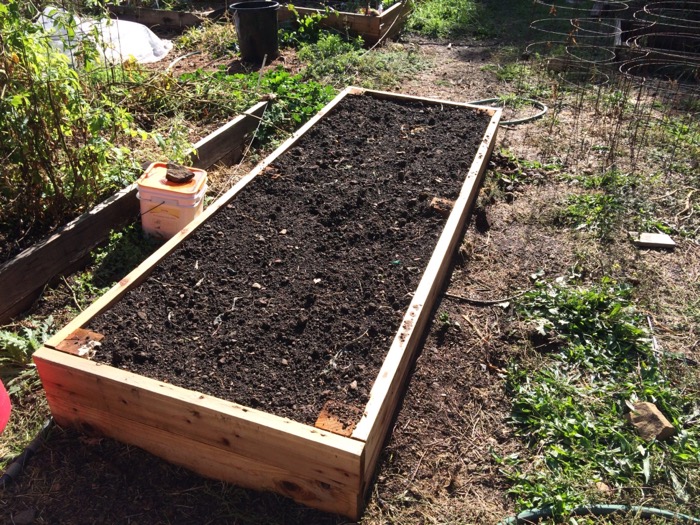
Garlic Varieties
I’ve experimented growing both softneck and hardneck garlic over the years, and I’ve found that for me hardnecks grow better (larger bulbs), but softnecks keep longer after harvesting. Normally I try to grow both kinds so that I can have garlic for cooking year-round.
Softneck garlic is the kind you buy in the store and may be the only kind you’ve ever seen. Most varieties of commercial garlic is either California Early or California Late. Although I live near Gilroy, CA, the garlic capital of America, I have had no luck at all with growing either of these varieties. For softneck garlic I usually grow an heirloom variety called Lorz Italian, originally from the Pacific Northwest. This variety grows well for me, keeps well, and tastes great.
For hardneck garlic I grow Music. The Music variety is really reliable and can grow monstrously huge if the conditions are right. I’ve grown other hardneck varieties over the years but Music performs so well that I’ve given up on everything else.
Normally I save some of my own garlic to plant every year, but last year I had trouble with root rot in the plants. Root rot is caused by a fungus in the soil. I don’t want to replant my old bulbs and possibly spread the fungus all over my garden, so this year I bought two pounds of certified disease-free new garlic bulbs. I often buy my garlic from Peaceful Valley Farm Supply, my favorite online garden store, although they don’t carry the softneck Lorz Italian I like. Rather than seek out a second garlic supplier I got lazy and this year I am planting my entire bed with Music.
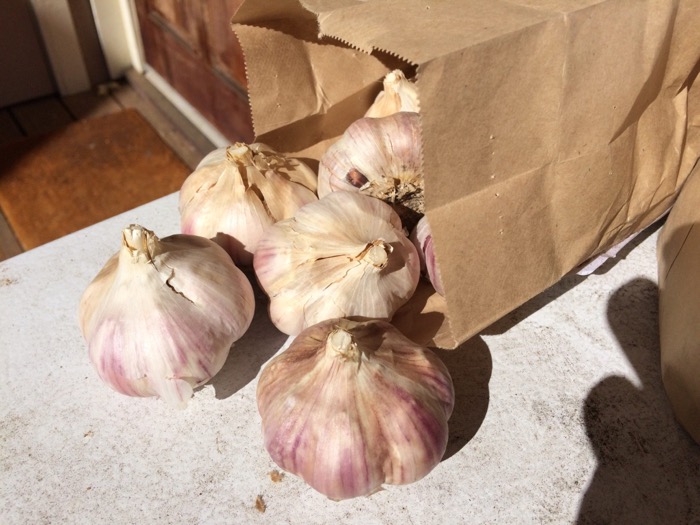
Preparing for Planting: Separating the Cloves
The day before I want to plant garlic (yesterday, in this case), I separate the cloves from the bulb and give them a good soak over night in an anti-fungal solution.
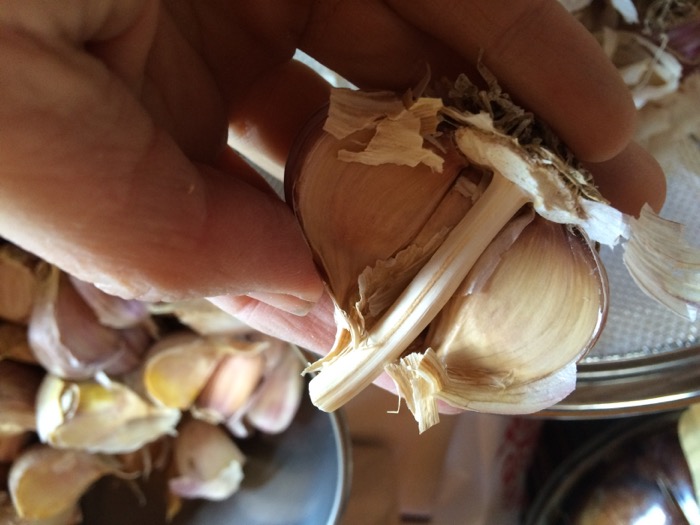
This is what a Music bulb looks like on the inside. With the hardneck garlic varieties there is a stiff stem in the middle of the bulb, and then just 6-8 large cloves all the way around. Softnecks, in comparison, often have little skinny cloves in the heart of the bulb. Although you can plant those skinny cloves, you’ll end up with smaller bulbs as a result. Start with the largest cloves to end up with the largest bulbs.
The end result from the 2lbs of garlic bulbs I bought: 106 cloves, which is less than I expected — the Music bulbs were especially large this year. The bed I’m planting these in will hold 200 cloves, so I’ll have some extra space.
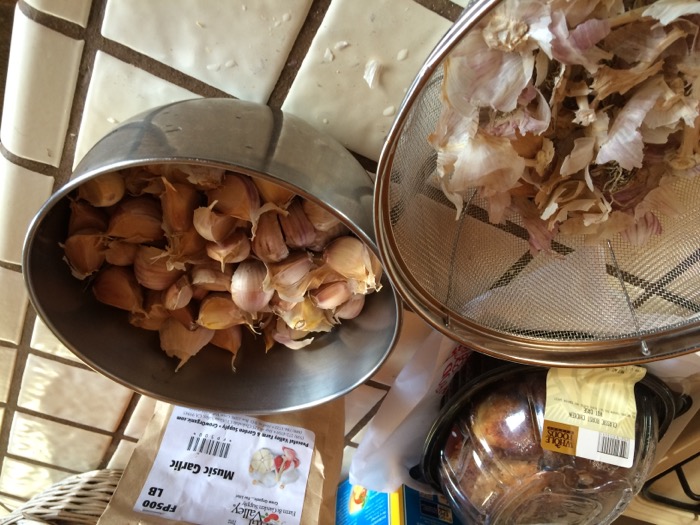
Preparing for Planting: An Overnight Soak
For years I just stuck my garlic cloves into the ground immediately after separating them from the bulb, with no problems. But since I have had fungus issues in my garden beds over the last few years, I soak my garlic overnight before planting in an anti-fungal solution. It doesn’t cure the fungus (which is resident in the soil), but it can help the garlic resist having problems if the fungus is there.
The general soaking advice for garlic I found online when I started doing this is 1 tablespoon of baking soda and 1 tablespoon of liquid seaweed to a gallon of water. The baking soda is for anti-fungal properties, and the seaweed provides a small amount of fertilizer. It creates this lovely dark-brown soup.
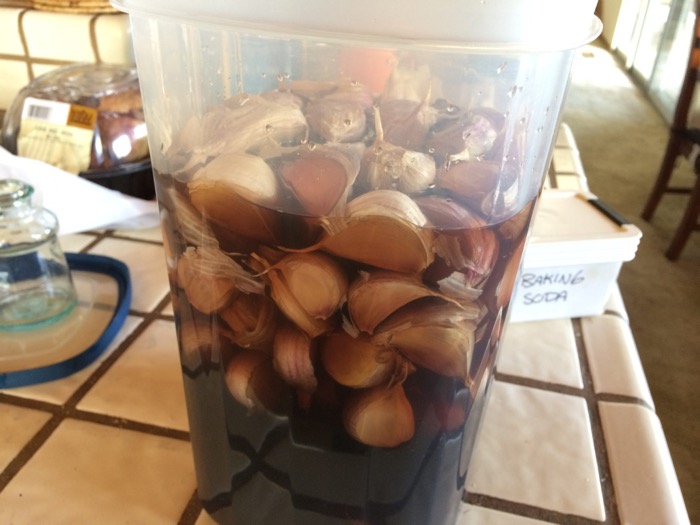
I weight down the cloves in the solution to keep them submerged and leave the container out on the back porch overnight. In 20-24 hours the garlic will go into the ground and start on the path to being next year’s food.
(Next: Garlic Planting)
Posted on 16 Nov 2015 • in blog •